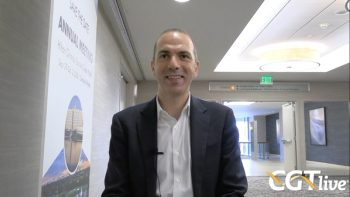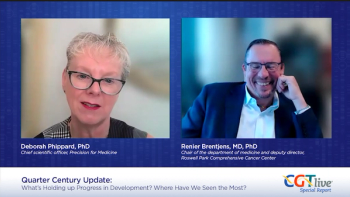
Nusinersen Show Benefits in Other SMA Populations
New data shows the ASO therapy’s benefit in older populations, following beneficial findings in patients previously treated with gene therapy.
“Adults constitute about half of all patients with SMA. Recently, numerous real-world studies reported the effectiveness and safety of nusinersen treatment in adults and older children. However, while the studies confirmed the beneficial effect and a satisfactory safety profile, the longest follow-up was limited to 14 months, and thus data on long-term effects in adults are limited. In addition, there was no evidence on the effectiveness of nusinersen in patients with SMA1 with prolonged survival up to adulthood, that is in SMA1c,” first author Anna Łusakowska, MD, department of neurology, Medical University of Warsaw, and colleagues wrote.1 “The present study was performed with the aim to fill the gap in the current scientific knowledge. SMA1c adult patients are rarely viewed as eligible for treatment, as no data was reported so far in this patient’s group. SMA1c is a significantly a milder phenotype then SMA1a and SMA1b and the course and clinical presentation is similar to SMA2a phenotype especially in later stages of diseases.”
Łusakowska and colleagues analyzed data from 73 patients evaluated with the Hammersmith Functional Motor Scale Expanded (HFMSE) scale and 47 evaluated with the Children’s Hospital of Philadelphia Infant Test of Neuromuscular Disorders (CHOP-INTEND). Some patients were also evaluated with Revised Upper Limb Module (RULM) and 6-minute walk tests (6MWT). Patients were followed for up to 30 months (mean, 23; standard deviation, 14 months). Participants were also evaluated with Patients Global Impression–Improvement (PGI-I) scale at each follow-up visit.
Investigators found that mean HFMSE increased by 3.9 points (P <.001) at month 14 and by 5.1 points (P <.0001) at month 30. Mean RULM score increased by 0.79 points (P = .001) at month 14 and 1.9 points (P <.0001) at month 30. Mean CHOP-INTEND score increased by 3.6 points at month 14 (P <0.001) and 5.6 points at month 26 (P <0.001). The mean 6MWT improved by 16.6 meters at month 14 and 27 meters at month 30 compared with baseline.
WATCH NOW:
Looking at clinically meaningful improvements, 62% of patients at month 14 and 71% at month 30 achieved at least a 3-point improvement in HFMSE, 58% at month 14 and 80% at month 30 achieved at least a 4-point improvement in CHOP INTEND, 26.6% at month 14 and 43.5% at month 30 achieved at least a 2-point improvement in RULM, and 26% at month 14 and 50% at month 30 achieved at least a 30-meter increase in 6MWT. Most participants (75% at month 14 and 85% at month 30) also had improved PGI-I scores. Altogether, adverse events were mild and mostly related to lumbar puncture.
“Our data provide real-world evidence for continuous effectiveness and safety of long-term nusinersen treatment in adults and older children regardless of the type and severity of SMA, including adult patients with SMA1c,” Łusakowska and colleagues wrote.1
Findings from another recent investigation with nusinersen were announced in July from the phase 4 RESPOND clinical trial (NCT04488133).2 Improvements in motor function were observed among patients with SMA who received the antisense oligonucleotide therapy treatment
REFERENCES
1. Łusakowska A, Wójcik A, Frączek A, et al. Long-term nusinersen treatment across a wide spectrum of spinal muscular atrophy severity: a real-world experience. Orphanet J Rare Dis. 18, 230 (2023). https://doi.org/10.1186/s13023-023-02769-4
2. New data highlight potential benefit of SPINRAZA® (nusinersen) in infants and toddlers with unmet medical needs after gene therapy. News release. Ionis Pharmaceuticals. June 30, 2023. Accessed July 6, 2023. https://ir.ionispharma.com/news-releases/news-release-details/new-data-highlight-potential-benefit-spinrazar-nusinersen
Newsletter
Stay at the forefront of cutting-edge science with CGT—your direct line to expert insights, breakthrough data, and real-time coverage of the latest advancements in cell and gene therapy.










































